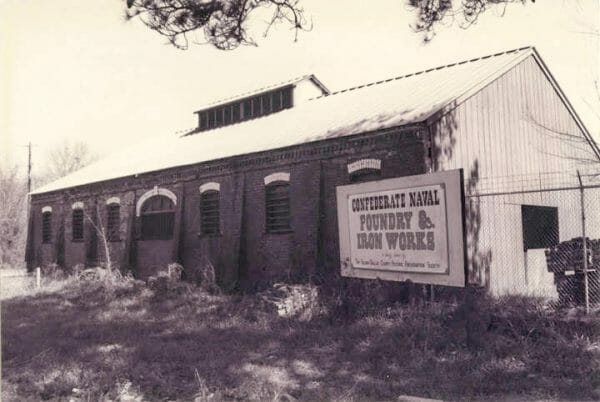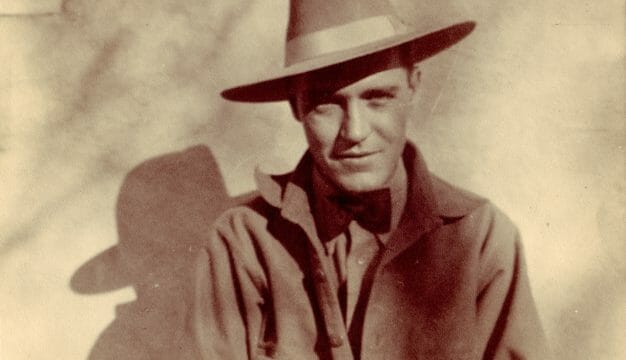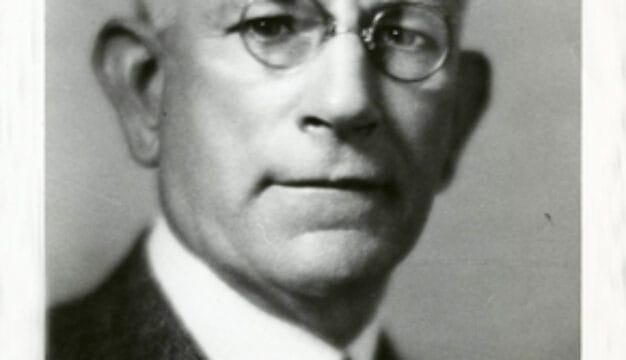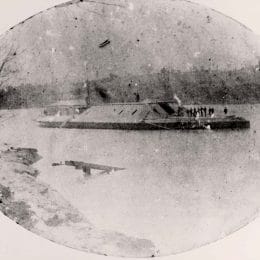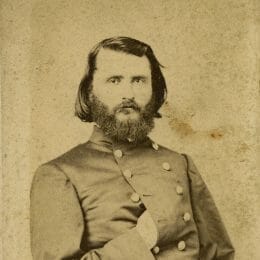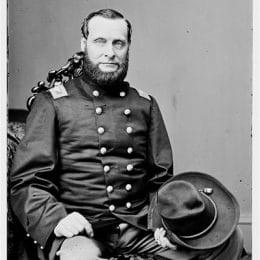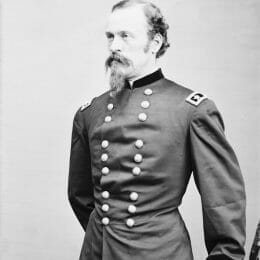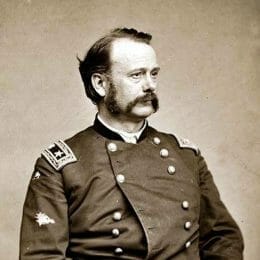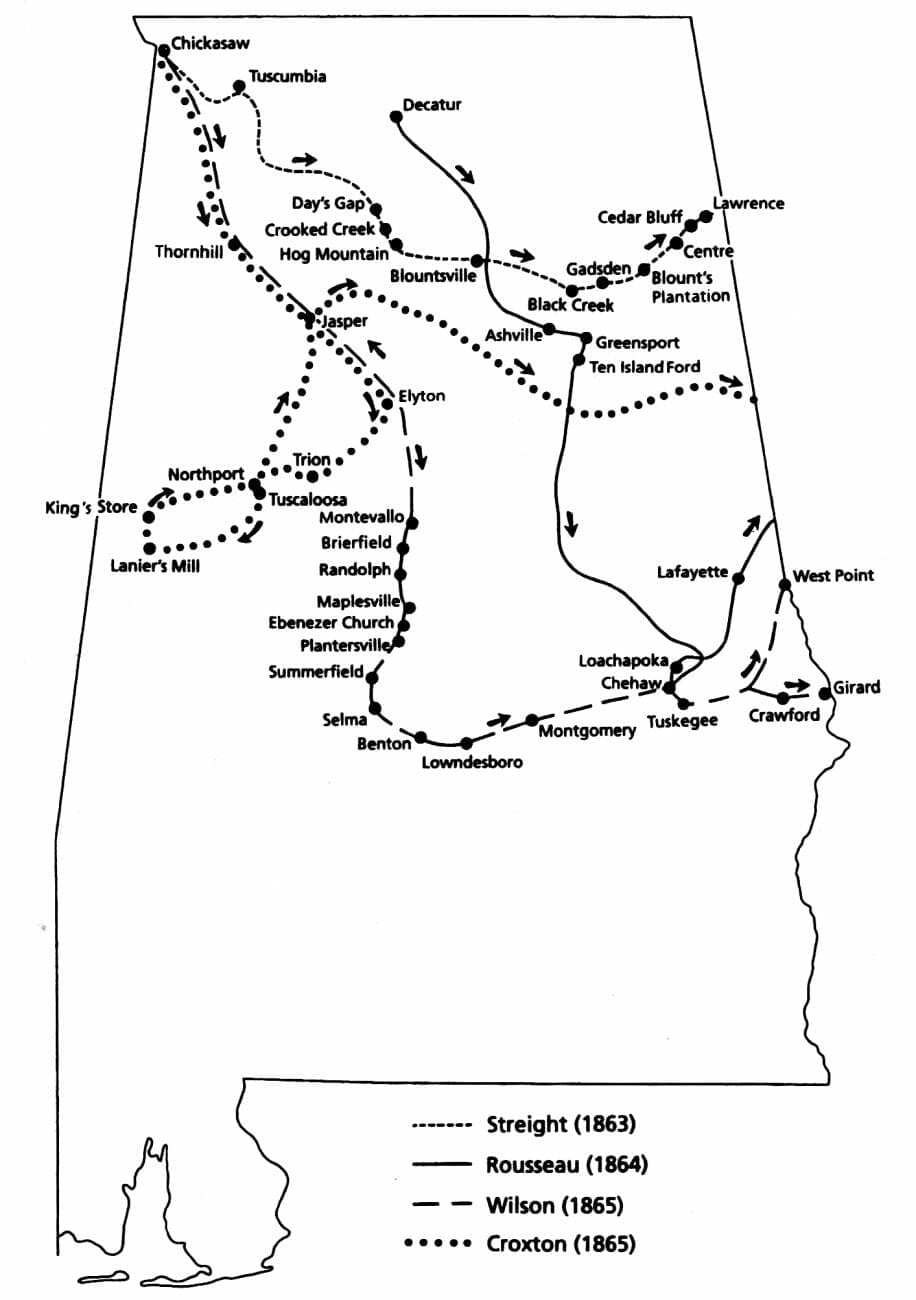Wilson's Raid
 James H. Wilson
Wilson’s Raid, conducted by U.S. Army general James H. Wilson from March 22, 1865, to mid-April 1865, destroyed most of Alabama‘s arms-manufacturing capabilities, rendering the state’s vast natural resources useless to the waning Confederate Army. Although it was the largest cavalry raid of the American Civil War, it had no effect on the war’s outcome, which had already been determined when Confederate general Robert E. Lee surrendered to Gen. Ulysses S. Grant at Appomattox Court House, Virginia, on April 9, 1865.
James H. Wilson
Wilson’s Raid, conducted by U.S. Army general James H. Wilson from March 22, 1865, to mid-April 1865, destroyed most of Alabama‘s arms-manufacturing capabilities, rendering the state’s vast natural resources useless to the waning Confederate Army. Although it was the largest cavalry raid of the American Civil War, it had no effect on the war’s outcome, which had already been determined when Confederate general Robert E. Lee surrendered to Gen. Ulysses S. Grant at Appomattox Court House, Virginia, on April 9, 1865.
In March 1865 the Confederacy teetered on the brink of defeat. U.S. Army commander Grant proposed a cavalry raid into central Alabama to target valuable coal mines, ironworks, ammunition manufacturers, and other industries in Montevallo, Selma, and Montgomery. Grant selected 27-year-old Gen. James H. Wilson, a veteran cavalry commander, to lead the raid. Wilson organized and trained approximately 13,480 cavalry troops in northwest Alabama for several months prior to launching the raid on March 22. As his forces moved through central Alabama, they were met with little resistance from Confederate forces, most of which had been sent eastward during the previous winter to oppose U.S. general William T. Sherman’s “March to the Sea.” The sole obstacle to Wilson’s movements was Gen. Nathaniel Bedford Forrest and the 5,000-man Confederate cavalry under his command. Most of his troops, however, lacked even basic equipment and were scattered throughout the state at isolated posts, rendering them incapable of thwarting any concentrated federal raid.
Moving uncontested through Alabama, Wilson repeatedly divided his forces, which enabled him to make simultaneous rapid strikes on multiple targets. Wilson’s movements were quick, and he targeted military production sites. Although there are some reports documenting destruction of civilian property, Wilson largely focused his devastation upon select targets of military importance. On March 30, he sent a force under Gen. John T. Croxton toward Tuscaloosa. On March 31, Wilson confronted and easily defeated Forrest at Montevallo, capturing and destroying one of the Confederacy’s last remaining iron works and coal mine. When Croxton and his men reached Tuscaloosa, they burned all but five of the buildings that comprised the University of Alabama. Having no military value, the destruction of the University of Alabama was largely a symbolic act aimed at displaying the Confederate army’s inability to defend itself. The sole military-related building on campus, the small round guardhouse, was left unscathed. Wilson then turned his focus on Selma. Forrest attempted to halt Wilson’s advance upon the city at Ebenezer Church, approximately 19 miles from Selma, but was defeated and forced back into the city’s defenses. On April 2, Wilson overwhelmed Selma’s outnumbered and poorly equipped defenders in what became known as the Battle of Selma. The triumphant raiders destroyed the city’s military industries, including the arsenal, Confederate Naval Ordnance Works, Confederate Nitre Works, and 11 iron works and foundries. Forrest’s forces fled the city in the middle of the night, setting fire to the city’s cotton stores to keep them from enemy hands. The fire spread, however, to other parts of the city.
 Selma Naval Foundry
As news of Selma’s destruction spread to nearby Montgomery, state officials and residents fled. Gov. Thomas H. Watts evacuated Montgomery and relocated the state government to Eufaula. The only Confederate forces left to defend the city, Confederate general Dan Adams’s state militia, were ordered to relocate to Columbus, Georgia, to defend the naval works and munitions stores, thereby leaving the former Confederate capital defenseless. On April 12, Wilson and his men occupied the city, which he largely spared. Federal soldiers destroyed the city’s arsenal, train depot, foundries, rolling mills, niter works, several riverboats, and railroad cars during his two-day occupation, leaving the state capital and private dwellings intact. Wilson then headed eastward toward Columbus, Georgia, where on April 16, his forces captured that city after a brief skirmish on both banks of the Chattahoochee River, including sites in present-day Phenix City. He learned of Lee’s surrender after the capture of Columbus while en route to Macon.
Selma Naval Foundry
As news of Selma’s destruction spread to nearby Montgomery, state officials and residents fled. Gov. Thomas H. Watts evacuated Montgomery and relocated the state government to Eufaula. The only Confederate forces left to defend the city, Confederate general Dan Adams’s state militia, were ordered to relocate to Columbus, Georgia, to defend the naval works and munitions stores, thereby leaving the former Confederate capital defenseless. On April 12, Wilson and his men occupied the city, which he largely spared. Federal soldiers destroyed the city’s arsenal, train depot, foundries, rolling mills, niter works, several riverboats, and railroad cars during his two-day occupation, leaving the state capital and private dwellings intact. Wilson then headed eastward toward Columbus, Georgia, where on April 16, his forces captured that city after a brief skirmish on both banks of the Chattahoochee River, including sites in present-day Phenix City. He learned of Lee’s surrender after the capture of Columbus while en route to Macon.
Wilson’s Raid was a resounding success and the final episode in Alabama’s Civil War experience. In less than one month, Wilson captured 6,000 enemy prisoners, destroyed four major Confederate industrial centers, and won a major symbolic victory when his troops occupied the former Confederate capital. Wilson effectively destroyed the state’s capacity to supply the Confederacy with military supplies and ordnance. Whereas some historians argue that the raid robbed potential rogue Confederates of the means to mount a last-ditch effort in the Western Theater following Lee’s surrender, most scholars regard the raid as a minor episode that took place during the final days of a withering Confederacy. Regardless of what happened during Wilson’s Raid, they contend that the war’s outcome had already been determined. The role of Wilson’s Raid in the Civil War remains a subject of debate, however.
Further Reading
- Jones, James Pickett. Yankee Blitzkrieg: Wilson’s Raid through Alabama and Georgia. Athens: University of Georgia Press, 1976.
- Keenan, Jerry. Wilson’s Cavalry Corps: Union Campaigns in the Western Theatre, October 1864 through Spring 1865. Jefferson, N.C.: McFarland, 1998.

